- Home
- Richard Dawkins
The Extended Phenotype Page 5
The Extended Phenotype Read online
Page 5
A related point is that the use of single-locus models is just a conceptual convenience, and this is true of adaptive hypotheses in exactly the same way as it is true of ordinary population genetic models. When we use single-gene language in our adaptive hypotheses, we do not intend to make a point about single-gene models as against multi-gene models. We are usually making a point about gene models as against non-gene models, for example as against ‘good of the species’ models. Since it is difficult enough convincing people that they ought to think in genetic terms at all rather than in terms of, say, the good of the species, there is no sense in making things even more difficult by trying to handle the complexities of many loci at the outset. What Lloyd (1979) calls the OGAM (one gene analysis model) is, of course, not the last word in genetic accuracy. Of course we shall eventually have to face up to multi-locus complexity. But the OGAM is vastly preferable to modes of adaptive reasoning that forget about genes altogether, and this is the only point I am trying to make at present.
Similarly we may find ourselves aggressively challenged to substantiate our ‘claims’ of the existence of ‘genes for’ some adaptation in which we are interested. But this challenge, if it is a real challenge at all, should be directed at the whole of the neo-Darwinian ‘modern synthesis’ and the whole of population genetics. To phrase a functional hypothesis in terms of genes is to make no strong claims about genes at all: it is simply to make explicit an assumption which is inseparably built into the modern synthesis, albeit it is sometimes implicit rather than explicit.
A few workers have, indeed, flung just such a challenge at the whole neo-Darwinian modern synthesis, and have claimed not to be neo-Darwinians. Goodwin (1979) in a published debate with Deborah Charlesworth and others, said, ‘… neo-Darwinism has an incoherence in it … we are not given any way of generating phenotypes from genotypes in neo-Darwinism. Therefore the theory is in this respect defective.’ Goodwin is, of course, quite right that development is terribly complicated, and we don’t yet understand much about how phenotypes are generated. But that they are generated, and that genes contribute significantly to their variation are incontrovertible facts, and those facts are all we need in order to make neo-Darwinism coherent. Goodwin might just as well say that, before Hodgkin and Huxley worked out how the nerve impulse fired, we were not entitled to believe that nerve impulses controlled behaviour. Of course it would be nice to know how phenotypes are made but, while embryologists are busy finding out, the rest of us are entitled by the known facts of genetics to carry on being neo-Darwinians, treating embryonic development as a black box. There is no competing theory that has even a remote claim to be called coherent.
It follows from the fact that geneticists are always concerned with phenotypic differences that we need not be afraid of postulating genes with indefinitely complex phenotypic effects, and with phenotypic effects that show themselves only in highly complex developmental conditions. Together with Professor John Maynard Smith, I recently took part in a public debate with two radical critics of ‘sociobiology’, before an audience of students. At one time in the discussion we were trying to establish that to talk of a gene ‘for X’ is to make no outlandish claim, even where X is a complex, learned behaviour pattern. Maynard Smith reached for a hypothetical example and came up with a ‘gene for skill in tying shoelaces’. Pandemonium broke loose at this rampant genetic determinism! The air was thick with the unmistakable sound of worst suspicions being gleefully confirmed. Delightedly sceptical cries drowned the quiet and patient explanation of just what a modest claim is being made whenever one postulates a gene for, say, skill in tying shoelaces. Let me explain the point with the aid of an even more radical-sounding yet truly innocuous thought experiment (Dawkins 1981).
Reading is a learned skill of prodigious complexity, but this provides no reason in itself for scepticism about the possible existence of a gene for reading. All we would need in order to establish the existence of a gene for reading is to discover a gene for not reading, say a gene which induced a brain lesion causing specific dyslexia. Such a dyslexic person might be normal and intelligent in all respects except that he could not read. No geneticist would be particularly surprised if this type of dyslexia turned out to breed true in some Mendelian fashion. Obviously, in this event, the gene would only exhibit its effect in an environment which included normal education. In a prehistoric environment it might have had no detectable effect, or it might have had some different effect and have been known to cave-dwelling geneticists as, say, a gene for inability to read animal footprints. In our educated environment it would properly be called a gene ‘for’ dyslexia, since dyslexia would be its most salient consequence. Similarly, a gene which caused total blindness would also prevent reading, but it would not usefully be regarded as a gene for not reading. This is simply because preventing reading would not be its most obvious or debilitating phenotypic effect.
Returning to our gene for specific dyslexia, it follows from the ordinary conventions of genetic terminology that the wild-type gene at the same locus, the gene that the rest of the population has in double dose, would properly be called a gene ‘for reading’. If you object to that, you must also object to our speaking of a gene for tallness in Mendel’s peas, because the logic of the terminology is identical in the two cases. In both cases the character of interest is a difference, and in both cases the difference only shows itself in some specified environment. The reason why something so simple as a one gene difference can have such a complex effect as to determine whether or not a person can learn to read, or how good he is at tying shoelaces, is basically as follows. However complex a given state of the world may be, the difference between that state of the world and some alternative state of the world may be caused by something extremely simple.
The point I made using antlions is a general one. I could have used any real or purported Darwinian adaptation whatsoever. For further emphasis I shall use one more example. Tinbergen et al. (1962) investigated the adaptive significance of a particular behaviour pattern in black-headed gulls (Larus ridibundus), eggshell removal. Shortly after a chick hatches, the parent bird grasps the empty eggshell in the bill and removes it from the vicinity of the nest. Tinbergen and his colleagues considered a number of possible hypotheses about the survival value of this behaviour pattern. For instance they suggested that the empty eggshells might serve as breeding grounds for harmful bacteria, or the sharp edges might cut the chicks. But the hypothesis for which they ended up finding evidence was that the empty eggshell serves as a conspicuous visual beacon summoning crows and other predators of chicks or eggs to the nest. They did ingenious experiments, laying out artificial nests with and without empty eggshells, and showed that eggs accompanied by empty eggshells were, indeed, more likely to be attacked by crows than eggs without empty eggshells by their side. They concluded that natural selection had favoured eggshell removal behaviour of adult gulls, because past adults who did not do it reared fewer children.
As in the case of antlion digging, nobody has ever done a genetic study of eggshell removal behaviour in black-headed gulls. There is no direct evidence that variation in tendency to remove empty eggshells breeds true. Yet clearly the assumption that it does, or once did, is essential for the Tinbergen hypothesis. The Tinbergen hypothesis, as normally phrased in gene-free language, is not particularly controversial. Yet it, like all the rival functional hypotheses that Tinbergen rejected, rests fundamentally upon the assumption that once upon a time there must have been gulls with a genetic tendency to remove eggshells, and other gulls with a genetic tendency not to remove them, or to be less likely to remove them. There must have been genes for removing eggshells.
Here I must enter a note of caution. Suppose we actually did a study of the genetics of eggshell removal behaviour in modern gulls. It would be a behaviour-geneticist’s dream to find a simple Mendelian mutation which radically altered the behaviour pattern, perhaps abolished the behaviour altogether. By the argument given above
, this mutant would truly be a gene ‘for’ not removing eggshells, and, by definition, its wild-type allele would have to be called a gene for eggshell removal. But now comes the note of caution. It most definitely does not follow that this particular locus ‘for’ eggshell removal was one of the ones upon which natural selection worked during the evolution of the adaptation. On the contrary, it seems much more probable that a complex behaviour pattern like eggshell removal must have been built up by selection on a large number of loci, each having a small effect in interaction with the others. Once the behaviour complex had been built up, it is easy to imagine a single major mutation arising, whose effect is to destroy it. Geneticists perforce must exploit the genetic variation available for them to study. They also believe that natural selection must have worked on similar genetic variation in wreaking evolutionary change. But there is no reason for them to believe that the loci controlling modern variation in an adaptation were the very same loci at which selection acted in building up the adaptation in the first place.
Consider the most famous example of single gene control of complex behaviour, the case of Rothenbuhler’s (1964) hygienic bees. The point of using this example is that it illustrates well how a highly complex behaviour difference can be due to a single gene difference. The hygienic behaviour of the Brown strain of honeybees involves the whole neuromuscular system, but the fact that they perform the behaviour whereas Van Scoy bees do not is, according to Rothenbuhler’s model, due to differences at two loci only. One locus determines the uncapping of cells containing diseased brood, the other locus determines the removing of diseased brood after uncapping. It would be possible, therefore, to imagine a natural selection in favour of uncapping behaviour and a natural selection in favour of removing behaviour, meaning selection of the two genes versus their respective alleles. But the point I am making here is that, although that could happen, it is not likely to be very interesting evolutionarily. The modern uncapping gene and the modern removing gene may very well not have been involved in the original natural selection process that steered the evolutionary putting together of the behaviour.
Rothenbuhler observed that even Van Scoy bees sometimes perform hygienic behaviour. They are just quantitatively much less likely to do so than are Brown bees. It is likely, therefore, that both Brown and Van Scoy bees have hygienic ancestors, and both have in their nervous systems the machinery of uncapping and removing behaviour: it is just that Van Scoy bees have genes that prevent them from turning the machinery on. Presumably if we went back even further in time we should find an ancestor of all modern bees which not only was not hygienic itself but had never had a hygienic ancestor. There must have been an evolutionary progression building up the uncapping and removing behaviour from nothing, and this evolutionary progression involved the selection of many genes which are now fixed in both the Brown and the Van Scoy strains. So, although the uncapping and the removing genes of the Brown strain really are rightly called genes for uncapping and removing, they are defined as such only because they happen to have alleles whose effect is to prevent the behaviour from being performed. The mode of action of these alleles could be boringly destructive. They might simply cut some vital link in the neural machinery. I am reminded of Gregory’s (1961) vivid illustration of the perils of making inferences from ablation experiments on the brain: ‘… the removal of any of several widely spaced resistors may cause a radio set to emit howls, but it does not follow that howls are immediately associated with these resistors, or indeed that the causal relation is anything but the most indirect. In particular, we should not say that the function of the resistors in the normal circuit is to inhibit howling. Neurophysiologists, when faced with a comparable situation, have postulated “suppressor regions”.’
This consideration seems to me to be a reason for caution, not a reason for rejecting the whole genetic theory of natural selection! Never mind if living geneticists are debarred from studying the particular loci at which selection in the past gave rise to the original evolution of interesting adaptations. It is too bad if geneticists usually are forced to concentrate on loci that are convenient rather than evolutionarily important. It is still true that the evolutionary putting together of complex and interesting adaptation consisted in the replacement of genes by their alleles.
This argument can contribute tangentially to the resolution of a fashionable contemporary dispute, by helping to put the issue in perspective. It is now highly, indeed passionately, controversial whether there is significant genetic variation in human mental abilities. Are some of us genetically brainier than others? What we mean by ‘brainy’ is also highly contentious, and rightly so. But I suggest that, by any meaning of the term, the following propositions cannot be denied. (1) There was a time when our ancestors were less brainy than we are. (2) Therefore there has been an increase in braininess in our ancestral lineage. (3) That increase came about through evolution, probably propelled by natural selection. (4) Whether propelled by selection or not, at least part of the evolutionary change in phenotype reflected an underlying genetic change: allele replacement took place and consequently mean mental ability increased over generations. (5) By definition therefore, at least in the past, there must have been significant genetic variation in braininess within the human population. Some people were genetically clever in comparison with their contemporaries, others were genetically relatively stupid.
The last sentence may engender a frisson of ideological disquiet, yet none of my five propositions could be seriously doubted, nor could their logical sequence. The argument works for brain size, but it equally works for any behavioural measure of cleverness we care to dream up. It does not depend on simplistic views of human intelligence as being a one-dimensional scalar quantity. The fact that intelligence is not a simple scalar quantity, important as that fact is, is simply irrelevant. So is the difficulty of measuring intelligence in practice. The conclusion of the previous paragraph is inevitable, provided only that we are evolutionists who agree to the proposition that once upon a time our ancestors were less clever (by whatever criterion) then we are. Yet in spite of all that, it still does not follow that there is any genetic variation in mental abilities left in the human population today: the genetic variance might all have been used up by selection. On the other hand it might not, and my thought experiment shows at least the inadvisability of dogmatic and hysterical opposition to the very possibility of genetic variation in human mental abilities. My own opinion, for what it is worth, is that even if there is such genetic variation in modern human populations, to base any policy on it would be illogical and wicked.
The existence of a Darwinian adaptation, then, implies the sometime existence of genes for producing the adaptation. This is not always made explicit. It is always possible to talk about the natural selection of a behaviour pattern in two ways. We can either talk about individuals with a tendency to perform the behaviour pattern being ‘fitter’ than individuals with a less strongly developed tendency. This is the now fashionable phraseology, within the paradigm of the ‘selfish organism’ and the ‘central theorem of sociobiology’. Alternatively, and equivalently, we can talk directly of genes for performing the behaviour pattern surviving better than their alleles. It is always legitimate to postulate genes in any discussion of Darwinian adaptation, and it will be one of my central points in this book that it is often positively beneficial to do so. Objections, such as I have heard made, to the ‘unnecessary geneticizing’ of the language of functional ethology, betray a fundamental failure to face up to the reality of what Darwinian selection is all about.
Let me illustrate this failure by another anecdote. I recently attended a research seminar given by an anthropologist. He was trying to interpret the incidence among various human tribes of a particular mating system (it happened to be polyandry) in terms of a theory of kin selection. A kin selection theorist can make models to predict the conditions under which we would expect to find polyandry. Thus, on one model applied to Tasmani
an native hens (Maynard Smith & Ridpath 1972), the population sex ratio would need to be male-biased, and partners would need to be close kin, before a biologist would predict polyandry. The anthropologist sought to show that his polyandrous human tribes lived under such conditions, and, by implication, that other tribes showing the more normal patterns of monogamy or polygyny lived under different conditions.
Though fascinated by the information he presented, I tried to warn him of some difficulties in his hypothesis. I pointed out that the theory of kin selection is fundamentally a genetic theory, and that kin-selected adaptations to local conditions had to come about through the replacement of alleles by other alleles, over generations. Had his polyandrous tribes been living, I asked, under their current peculiar conditions for long enough—enough generations—for the necessary genetic replacement to have taken place? Was there, indeed, any reason to believe that variations in human mating systems are under genetic control at all?
The speaker, supported by many of his anthropological colleagues in the seminar, objected to my dragging genes into the discussion. He was not talking about genes, he said, but about a social behaviour pattern. Some of his colleagues seemed uncomfortable with the very mention of the four-letter word ‘gene’. I tried to persuade him that it was he who had ‘dragged genes in’ to the discussion although, to be sure, he had not mentioned the word gene in his talk. That is exactly the point I am trying to make. You cannot talk about kin selection, or any other form of Darwinian selection, without dragging genes in, whether you do so explicitly or not. By even speculating about kin selection as an explanation of differences in tribal mating systems, my anthropologist friend was implicitly dragging genes into the discussion. It is a pity he did not make it explicit, because he would then have realized what formidable difficulties lay in the path of his kin selection hypothesis: either his polyandrous tribes had to have been living, in partial genetic isolation, under their peculiar conditions for a large number of centuries, or natural selection had to have favoured the universal occurrence of genes programming some complex ‘conditional strategy’. The irony is that, of all the participants in that seminar on polyandry, it was I who was advancing the least ‘genetically deterministic’ view of the behaviour under discussion. Yet because I insisted on making the genetic nature of the kin selection hypothesis explicit, I expect I appeared to be characteristically obsessed with genes, a ‘typical genetic determinist’. The story illustrates well the main message of this chapter, that frankly facing up to the fundamental genetic nature of Darwinian selection is all too easily mistaken for an unhealthy preoccupation with hereditarian interpretations of ontogenetic development.

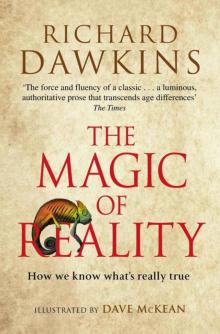 The Magic of Reality
The Magic of Reality The Extended Phenotype
The Extended Phenotype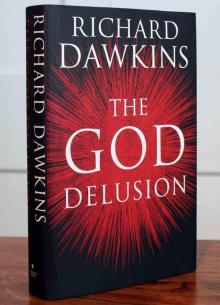 The God Delusion
The God Delusion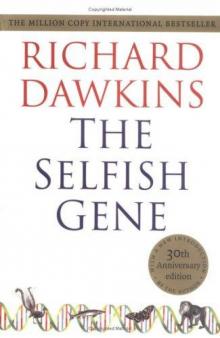 The Selfish Gene
The Selfish Gene The Blind Watchmaker
The Blind Watchmaker The Greatest Show on Earth
The Greatest Show on Earth Climbing Mount Improbable
Climbing Mount Improbable Outgrowing God
Outgrowing God Brief Candle in the Dark
Brief Candle in the Dark The Greatest Show on Earth: The Evidence for Evolution
The Greatest Show on Earth: The Evidence for Evolution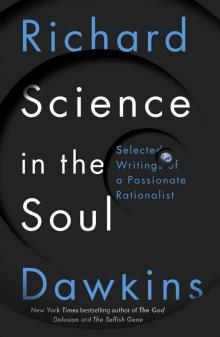 Science in the Soul
Science in the Soul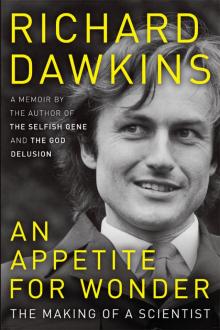 An Appetite for Wonder
An Appetite for Wonder